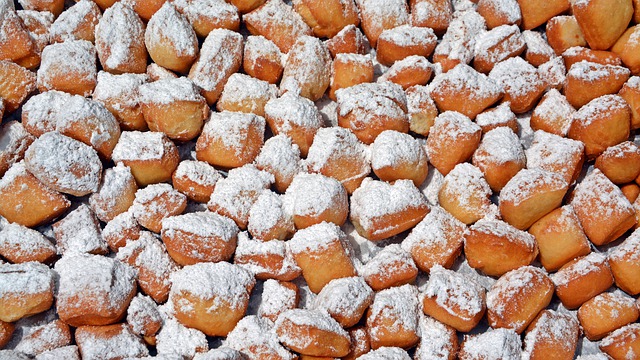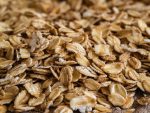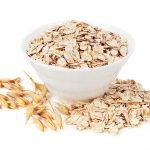
Fats are an important nutritional source of energy as well as molecules for cell membranes and other organelles in cells. Fat metabolism as opposed to fat synthesis is a critical process for generating energy in the form of ATP. Most of fat breakdown involves beta-oxidation of fatty acids.
Typical foods that are high in fats include cheese, butter, fatty meats and oily fish, avocado, chocolate and various seeds and nuts. These fats are commonly called triacylglycerols or triglycerides, where three fatty acids are linked to backbone formed from glycerol.
If 1 gram of fat is completely oxidised then it produces 9.3 calories of energy. Compared to the oxidation of 1 gram of carbohydrate, only 4 calories are produced. It is evident that fat is a very effective source of energy.
Fats make up 84% of stored energy whilst carbohydrate in the form of glucose and glycogen forms less than 1% of our energy reserves. Protein in the form of muscle and other tissue makes up 15% of the energy reserve.
The Digestion of Dietary fats And Lipids In Mammals
Here we give a brief description.
When fats are consumed they pass into the stomach and then through to the small intestine. They pick up bile salts as they pass the gall bladder which is a small organ that cradles the start of the small intestine. The bile salts emulsify dietary fats to form mixed micelles which is a way of solubilising the fats so they suitable for further processing.
At the same time as micelles of fats are produced, intestinal enzymes called lipases degrade triacylglycerols. The released fatty acids along with any other breakdown products are absorbed through the intestinal mucosa. Some of the fatty acids are turned back into fat (triacylglycerols) in the intestinal mucosa.
The triacylglycerols are incorporated into chylomicrons with cholesterol and apolipoproteins. These fat-laden chylomicrons then move through the lymphatic system and the bloodstream to various tissues.
A particular enzyme, lipoprotein lipase is activated by apo-C-II in blood capillaries where it catalyses the conversion of triacylglycerols to their component parts again of fatty acids and glycerol. These fatty acids enter cells where they are either oxidised as fuel or reesterified for storage. These cells are specifically myocytes or adipocytes.
A Brief description Of Micelles
Micelles are aggregates of monomer surfactant molecules which can be dispersed in a liquid. They have a hydrophilic head which makes the surface suited to interaction with aqueous solutions and solvents. The hydrophobic tails are part of the micelle centre and form what is termed an oil-in-water micelle.
Inverse micelles have their head groups at the centre of a micelle with the tails extending outwards, so forming water-in-oil micelles.
Fat Oxidation: Overview
Fat is hydrolysed into fatty acids and glycerol.
Glycerol is phosphorylated by the enzyme glycerol kinase to glycerol-3-phosphate. This molecule is converted to dihydroxy acetone phosphate where it then enters the gluconeogenesis pathway. The ultimate product is pyruvate which enters the tricarboxylic acid cycle (TCA) which is sometimes called the Krebs cycle.
We know of four types of fatty acid oxidation in cells. The most important is beta-oxidation which we cover first of all and is the main oxidation route. In some instances it is called mitochondrial beta oxidation. We also have to a lesser extent alpha-oxidation, omega-oxidation and peroxisomal beta oxidation which we cover later.
Fatty acids are most commonly oxidised in the mitochondria of cells using the beta-oxidation mechanism. Generally, this oxidation process occurs in many tissues especially the liver, heart and kidney. There is no fatty acid oxidation in the brain.
Firstly, the fatty acid must pass the mitochondrial membrane and to do so is activated by binding with coenzyme A to form acyl CoA (see below). The acyl CoA is transferred from cytosol to mitochondria by binding to carnitine (if of a certain size) in what is termed the carnitine shuttle system.
The fatty acids are released from carnitine to enter the beta-oxidation pathway which is the most prominent, within the mitochondria. The fatty acid is oxidized in a four-step process. These fatty acids are dehydrogenated (1), then hydrated (2). There is a second dehydrogenation step (3) followed by thiolytic cleavage (4).
Activation of Fatty Acid By Binding Coenzyme A
A fatty acid has a free carboxylate group. The enzyme thiokinase catalyses the addition of adenosine monophosphate (AMP), not ADP, by converting adenosine triphosphate (ATP) to AMP and pyrophosphate (PPi). This reaction would essentially not be feasible but the pyrophosphate is hydrolysed using pyrophosphase and so drives the reaction to form an acyladenylate of the fatty acid. This highly reactive form then reacts with coenzyme A which forms an acyl CoA and the AMP group is released.
Transfer Of Acyl CoA From Cytosol To Mitochondria
Acyl CoA is bound to carnitine using the enzyme carnitine acyl-transferase I (CAT-I) on the cytosolic side of the mitochondrial membrane.
Coenzyme A is released. Binding carnitine to the acyl CoA produces acyl-carnitine. This molecule is picked up by a carrier protein which is a translocase. This resides in the inner mitochondrial membrane which transfers it from the cytosol to the mitochondrial matrix.
A related enzyme, carnitine acyl-transferase II (CAT-II) then catalyses the release of carnitine using coenzyme A. The enzyme is found on the inner surface of the inner mitochondrial membrane. The newly formed acyl CoA then passes on to beta-oxidation.
The carnitine released returns back to the cytosol for reuse by the translocase.
Detailed Pathway On Beta-Oxidation Of Fatty Acids
The process of beta-oxidation of fatty acids is strictly aerobic – it is not an anaerobic process. At the end of it, acetyl-CoA feeds directly into the TCA cycle.
The four main steps are:-
(1) oxidation using an FAD linked dehydrogenase which takes the form of dehydrogenation.
(2) hydration using hydratase
(3) oxidation using an NAD linked dehydrogenase
(4) thiolytic cleavage using a thiolase.
Step 1 involves oxidation of acyl CoA using acyl CoA dehydrogenase which produces unsaturated acyl CoA (enoyl CoA). Being FAD linked, FAD is the hydrogen acceptor to form FADH2. The enoyl CoA formed contains a double bond upon dehydrogenation which is a trans isomer.
In Step 2, the double bond is hydrated to form a beta-hydroxyacyl CoA (p-hydroxyacyl CoA) by adding a water molecule. The enzyme used here is an enoyl-CoA hydratase.
In step 3, the beta-hydroxyacyl CoA is oxidised to produce beta-ketoacyl CoA using the enzyme beta-hydroxyacyl-CoA dehydrogenase. The cofactor used in NAD which is reduced to NADH. A beta-ketoacyl-CoA molecule is produced.
The final step (step 4), involves the cleavage of the two carbon fragment which splits the bond between the alpha and beta-carbons of the fatty acid. The thiolase is also called an acyl-CoA acetyltransferase which adds another coenzyme A molecule to form acetyl CoA. The remaining acyl-CoA is now reduced by 2 carbon atoms. The new acyl-CoA is the substrate for the next round of oxidation beginning with step 1 again. So the process continues with two-carbon units being removed sequentially in each round.
The Energy Involved In Beta-Oxidation Of A Typical Fatty Acid.
If you start with palmitate (palmitic acid) which is a 16-carbon fatty acid, it is reduced in the first phase by a two-carbon unit to a 14-carbon fatty acid called myristic acid-CoA (because a CoA group is still bound to the ever shrinking fatty acid). In the end a four-carbon fatty acyl CoA molecule called butyryl CoA. That process continues until two acetyl-CoA molecules are left which enter the TCA cycle.
In each cycle, FADH2, NADH and a proton are released which are also transported into the respiratory chain. The FADH2 molecules is converted into two ATP molecules, whilst NADH and the proton will produce 3 ATP molecules.
In all, after 7 cycles, 35 ATP molecules are produced which can then be used for further driving of enzymic reactions.
The beta-oxidation of palmitic acid is repeated in 7 cycles and produces a total of 8 molecules of acetyl CoA
Each acetyl CoA is oxidised in the TCA cycle to produce 12 ATP molecules. Given palmitic acid produces 8 acetyl CoA molecules, then 8*12 lots of ATP is produced making 96 molecules in all.
We know that 2 ATP molecules are used in the activation of fatty acid which occurs only once. If you do an energy balance, the energy gain is 35 ATP plus 96 ATP minus the two ATPs produces 129 ATP molecules.
The Beta-Oxidation Of Odd Chain Fatty Acids
So far, we have looked at beta-oxidation of fatty acids with an even numbered carbon chain. The metabolism of odd chain fatty acids is a little different. In all cases the final cleavage step produces not 2 acetyl CoA molecules, but one acetyl CoA molecule and propionyl CoA.
In this case, step (1): propionyl CoA has a molecule of carbon dioxide added using propionyl CoA carboxylase. A molecule of ATP is used up and involves the cofactor biotin. A molecule of D-methyl malonyl CoA is generated.
step (2) D-methyl malonyl CoA is converted to L-methyl malonyl CoA using the enzyme racemase.
step (3). L-methyl malonyl CoA is converted using the enzyme, a mutase and the modified vitamin B cofator, adenosyl B12. This forms succinyl CoA.
Regulation Of Beta-Oxidation
The availability of free fatty acids (FFA) regulates the net use of fatty acids through beta-oxidation. The level of fatty acids in the blood is controlled by the glucagon:insulin ratio. These two hormones are critical in balancing fatty acids.
An increased availability of FFAs increases the rate of beta oxidation.
Glucagon promotes an increase in free fatty acid levels whereas insulin decreases the FFAs.
The enzyme carnitine acyl-transferase I (CAT-I) which catalyses the binding of carnitine to a fatty acid so it can be transported across the mitochondria, is inhibited by a rise in malonyl CoA. This is a substrate which acts as a regulator needed for promoting what is termed de novo fatty acid synthesis. It is an approach to regulating the change from fatty acid breakdown or synthesis..
The Other Routes: Minor Fatty Acid Oxidation
Thee are three other types, alpha-oxidation, omega-oxidation and peroxisomal beta oxidation.
Alpha-Oxidation
This describes the oxidation of a fatty acid which has a methyl group at the beta-carbon. There is the removal of one carbon unit adjacent(next) to the alpha-carbon from the carboxylic end in the form of a molecule of carbon dioxide.
Alpha oxidation occurs in those fatty acids that have a methyl group (CH3) at the beta-carbon which would normally block beta-oxidation.
A typical substrate of this type is phytanic acid which is present in milk or derived from phytol found in animal fat or in the chlorophyll.
The site of alpha-oxidation is n the peroxisomes of a cell. There is not production of ATP.
An Example Of Alpha Oxidation: The Oxidation Of Phytanic Acid
There are five steps:-
- Activation of phytanic acid
- Hydroxylation
- Removal of formyl CoA as CO2.
- Oxidation of pristanal
- Beta-oxidation of pristanic acid
Omega (ω) Oxidation
Omega oxidation takes place in the endoplasmic reticulum of the cell. Here oxidation covers oxidation at the omega-carbon which is the carbon atom most distant from the carboxyl group.
The key substrates are medium and long-chain fatty acids.
Whilst is is a minor pathway it assumes extreme importance when beta oxidation becomes defective. The product is a dicarboxylic acid.
Peroxisomal Beta Oxidation
Peroxisomal beta oxidation is a modified form that occurs in the peroxisomes of the cell.
Extremely long chain fatty acids where the carbon chain length is over 22 carbon atoms long. These are usually ‘best’ metabolsied in these structures called peroxisomes.
The molecule FADH2 is produced by the action of acyl CoA dehydrogenases which pass electrons directly to oxygen. Hydrogen peroxide H2O2 is produced which is cleaved by the enzyme peroxisomal catalase to water and an oxygen atom which goes on to form oxygen.
Subsequent steps ate identical to their mitochondrial equivalent steps. All these reactions are performed by different versions of the same enzymes as in mitochondrial beta-oxidation. These are described as isoforms.



Leave a Reply